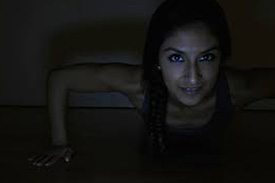 All professional dancers will have different ways of caring for their bodies, easing the strain dance and performance has on their physicality, and has had over the many years of their career. Bodies must be strong for long-term success, and each dancer will have their own processes which work for them.
All professional dancers will have different ways of caring for their bodies, easing the strain dance and performance has on their physicality, and has had over the many years of their career. Bodies must be strong for long-term success, and each dancer will have their own processes which work for them.
If dancers are naturally flexible, they may spend their time cross-training to counter-act the body’s elasticity. Despite how easy these dancers may find particular steps or choreography, the limbs and joints must be kept under control. This may be done by working to strengthen the core, as well as the joints and muscles of the appendages in order to find balance within the body. This way dancers can work to alleviate any weaknesses they may have, such as an arch of the foot which is not quite as strong, for example.
Warm-ups and morning classes are therefore a must for all dancers, to get their bodies on the right track for the day. To arrive at class feeling refreshed and ready to move requires going to bed at a time which means the dancer gets enough sleep. Sleep is vital for repair and preparation for the day ahead, so not getting enough can be hugely detrimental. It can also mean the brain is not quite so alert and injuries may be more likely to happen.
Once the day is in progress, the body bust be maintained constantly. In order to perform at its best the body needs adequate fuel to convert into energy, as well as lots of water to remain hydrated. The muscles – and the brain – needs fuelling effectively in order to get the best of the dancing day. Dancers have their own techniques which work for them – some may prefer to snack throughout the day, others may prefer to have more routine in terms of what they are eating and when. It is ultimately important therefore that each individual need is met to get the most out of the body.
